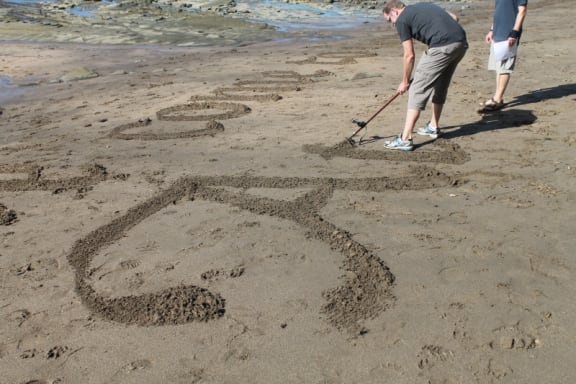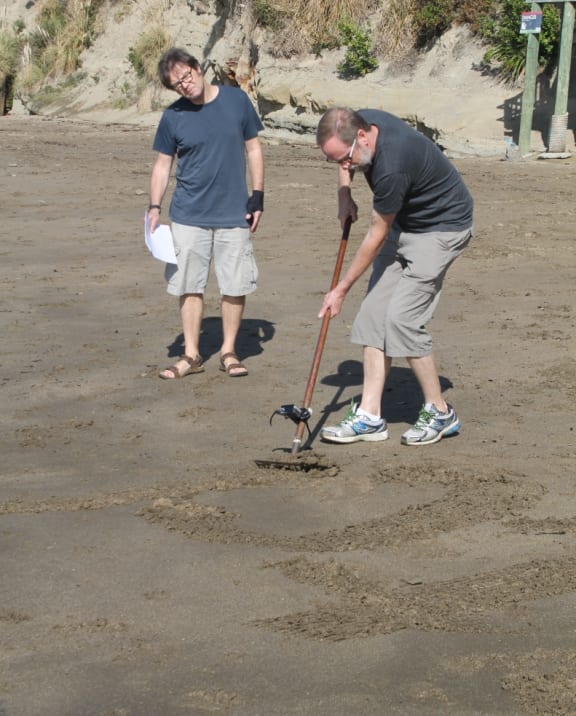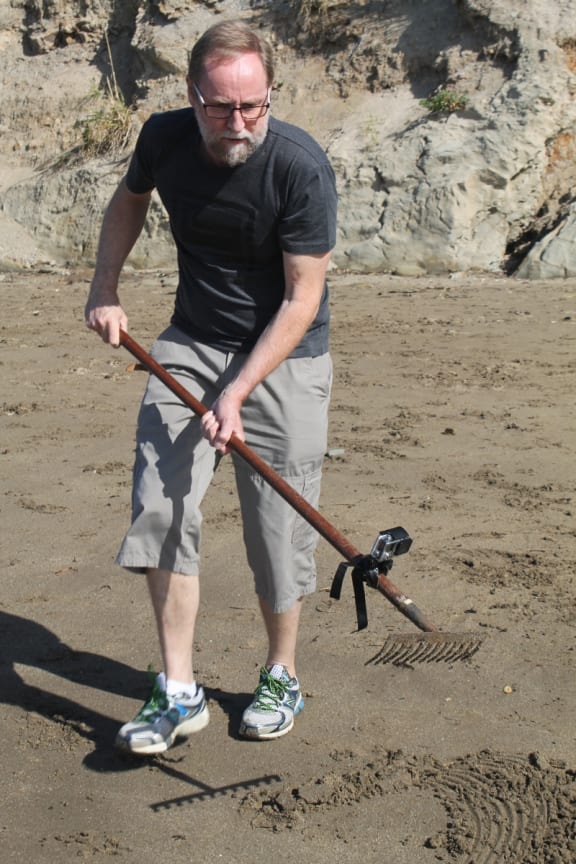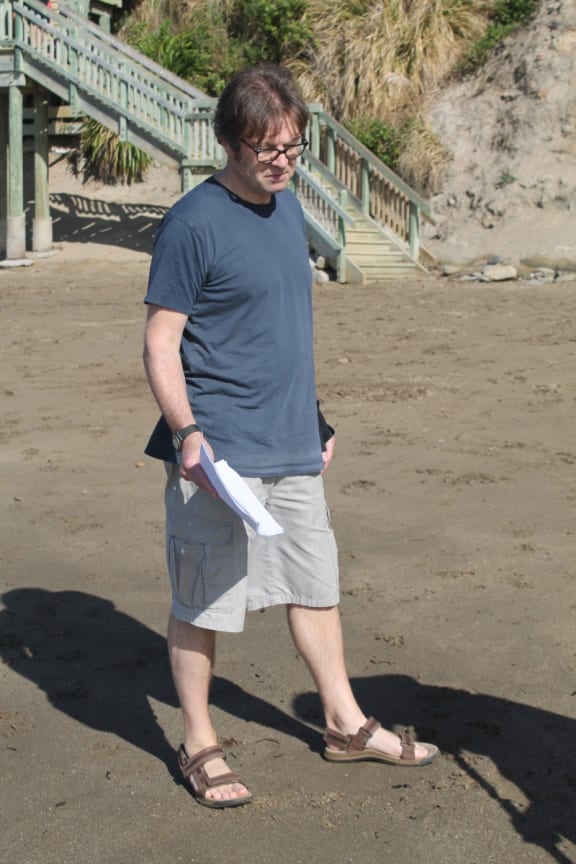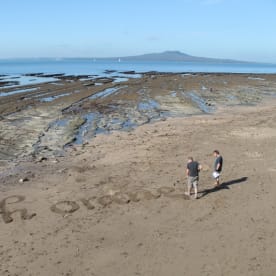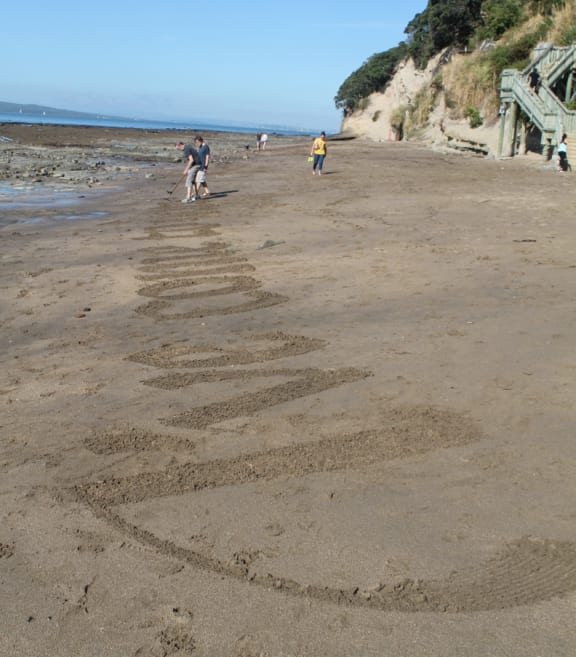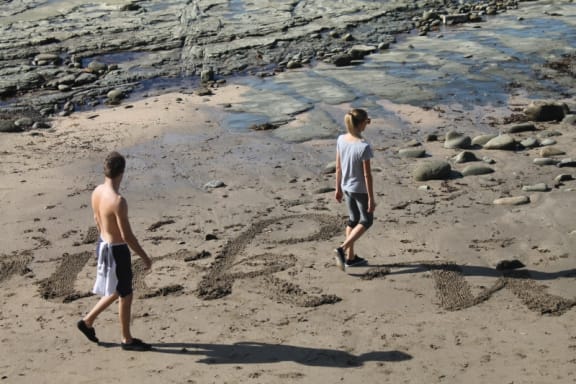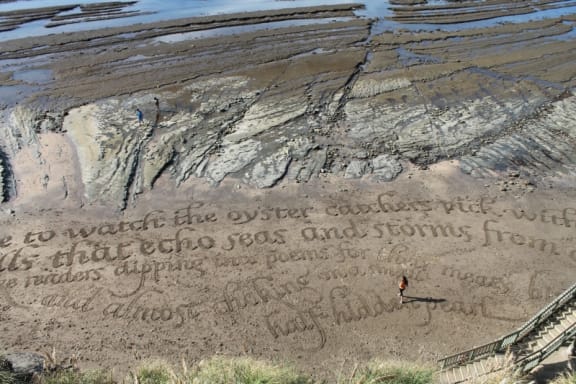
A view of the completed poem from the cliff top above. Photo: RNZ/Justin Gregory
Aucklanders love going to the beach but not all of them love poetry. Is it because they just haven't met each other yet? Poet Paul White and calligrapher Peter Gilderdale from AUT University thought the obvious answer was to go to the seaside and write giant poems in the sand. So they've embarked on a collaboration doing just that. Justin Gregory met them at Castor Bay beach as they prepared for an afternoon's work.
To write a giant poem on a beach in beautiful, well-formed italic lettering requires both peace of mind and an almost Zen-like acceptance of things beyond your control; it’s a problem John Keats never had to contend with.
Calligrapher Peter Gilderdale and poet Paul White’s approach to bringing poetry to the people is unique.
"When you arrive, suddenly half the sand [on the beach] has gone. The equation is always different and with each tide it will be different," says Gilderdale.
The solution, he says, is to turn up with an open mind and be responsive to the conditions before deciding what the poem will be and how it will look.
"It's got to feel right. The weather, the feel of the beach, it's got to resonate with the poem."
Gilderdale uses two rakes to write the poems directly on to the sand while White keeps an eye on the text and the spelling. The two men make their choice from an existing collection of 100 sea-themed poems written by White in response to an Alice Munro short-story.
When White approached Gilderdale about making some calligraphy for the collection, he was pleasantly surprised to find that the latter already had an idea in mind.
“He said ‘I’m interested in a thing called Environmental Calligraphy and I thought: ‘that’s going to be interesting’.”
Gilderdale uses an approach dubbed Actor Network Theory which suggests human and non-humans can participate in and affect systems and networks.
In this case the beach with its stones, rocks, seaweed and sand, is just as involved in the creation of the poem as the duo, passers-by and the many dogs that run across the sand as they work. All help shape the final work.
“When I’m thinking about the writing I want to be aware. Once you start then it’s a matter of responding to a whole lot of things that you don’t expect to happen - like hitting rocks and hitting wet sand that doesn’t want to write. I want the beach to be a part of the equation,” Gilderdale says.
White believes that writing poems on a beach allows them to be read in a fuller, more exacting way. A poem in a book can be ignored but when it is written in letters more than a metre high, it demands more.
“It almost gets a concentrated piece of attention that might have some more effect [on people].”
The pair have so far written four poems on beaches around Auckland. They are photographing and filming the project and believe an exhibition of the works will come about one day.
Just over an hour since starting work, a puffing, sweating Gilderdale has finished. The beach, he says, had a lot to say in the final shape of the work but he seems a little bit happy with what he has made. White keeps a respectful distance from his collaborator and seems cautious about praising him. But he smiles when Gilderdale isn’t looking.
Seen from the cliff above the beach, this four line, 100 metre-long poem is an impressive and beautiful sight but it will soon be washed away by the incoming tide. Between now and then it can be appreciated by a handful of readers who walk through and around it and by the two men who worked so hard to create it.
Poem – untitled.
I’ve come to watch the oyster catchers pick with orange beaks
at shells that echo seas and storms from other shores.
They poke like readers dipping into poems for their meaty bits
and almost choking on a small half hidden pearl.
By Paul White.
